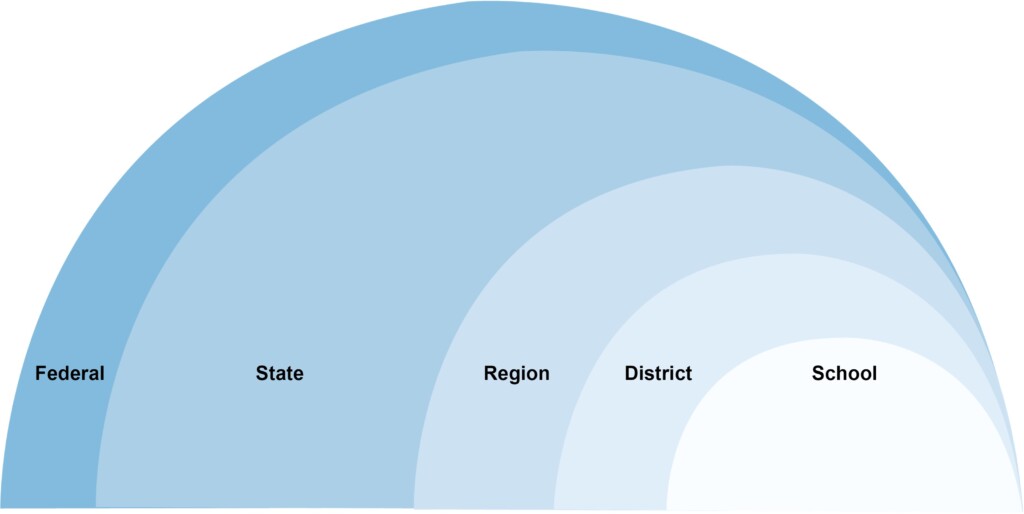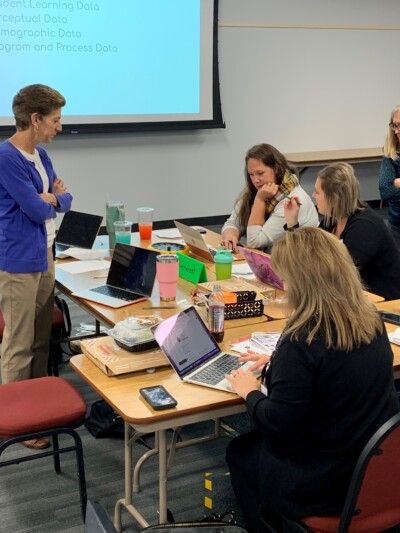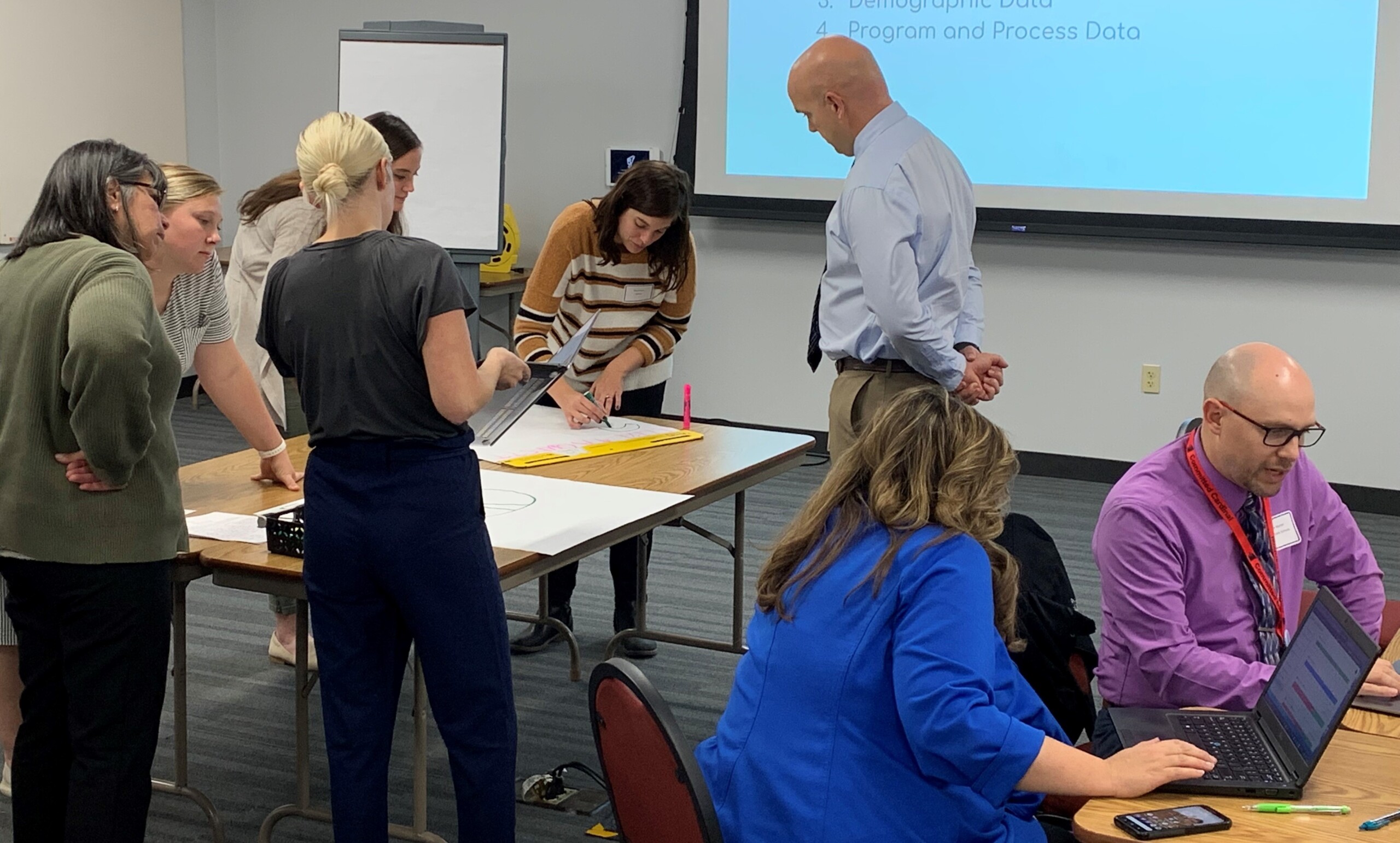One of our primary roles at the Region 11 Comprehensive Center (managed by McREL) is to support statewide education improvement efforts involving partnerships among state departments of education, regional service agencies, local districts, and even individual schools.
In Nebraska, for example, we’re currently helping build a partnership to enhance teaching practices and learning outcomes for multilingual learners.
The partnership, which began with the Nebraska Department of Education (NDE), grew from a presentation at the state’s annual Administrators’ Days conference, which focused on school improvement through an equity-focused lens. Historically, partnerships between state agencies and schools in targeted support sometimes revolve around compliance matters, so it was important to center this work around authentic collaboration. By working intensely with pilot schools, the partnership intends to document an improvement process that can be scaled across the state.
“As a state agency there is a perception of us as being regulators, but we are also capacity builders and change agents. Our mission is finding out how we support those closest to the work.”
Shirley Vargas, Senior Administrator, Office of Coordinated School and District Support, NDE.
 It’s complex, challenging work, but we know that to bring about lasting, systemic, and impactful change, it’s important to work across the entire educational ecosystem, as represented in the figure.
It’s complex, challenging work, but we know that to bring about lasting, systemic, and impactful change, it’s important to work across the entire educational ecosystem, as represented in the figure.
As you can imagine, this project involves dozens of educators and support staff, some of whom are familiar with continuous improvement processes and some who are participating in a large-scale project like this for the first time. Through our meetings and conversations with everyone involved, we’re learning, or re-learning, the importance of three key factors for success in school improvement partnerships.
Key Factor 1: Unite Behind a Shared Purpose for the Work
At the heart of every effective school or system is a clear sense of purpose. McREL’s synthesis of research on high-performing school leadership has found that effective leaders are able to rally their teams around a shared understanding of what their vision and goals for their school are, what needs to change, and the pathway they’ll collectively take for continual improvement.
The same thing applies for large-scale, multiagency partnerships. We start by having collaborative conversations among everyone involved to develop a shared understanding of the “why” of our work, the moral purpose. Then, together, we can create a vision of what changes we believe are needed to achieve success and a roadmap for getting there. Here are some things to keep in mind if you want to create a shared purpose for your school improvement initiative:
- Start meetings with a conversation on the why. Why are we focused on this area of need? Why is it important for our students?
- Display and discuss data that supports the need for change. As Victoria Bernhardt states in her book Data Analysis for Continuous School Improvement, “it’s easier to understand why some things have to change when all staff see the data pointing them in a certain direction.”
- Establish clear outcome goals, so that everyone knows and keeps in mind what they are collectively driving toward.
- Work together to build a logic model. A logic model illustrates the relationship between resources, activities, and intended outcomes and allows a diverse group of participants to come to a common understanding of the scope of the work.
Key Factor 2: Establish Clear Roles and Responsibilities
When partnering with multiple departments, offices, and schools, it’s important for each agency and individual to know how their involvement contributes toward the project’s success. The work is easier and more efficient when people know what their role is, what tasks they will take on and manage, and how the group will interact. Not only does making a clear contribution create a sense of belonging, but also it holds all partners accountable for the success of the project. Here are some things to keep in mind to clarify roles and responsibilities:
- Early in the project, identify the strengths of participating organizations and contributors. Have a collaborative, open conversation with participants about how each can contribute to the project vision and goals.
- Identify and document specific leadership roles for the project as well as the responsibilities of each organization. This is especially important when working across agencies such as state departments and regional service agencies that may have similar, overlapping functions and capacities.
- Create processes for how work will be created, shared, reviewed, and approved. These processes outline clear expectations for every participant regarding their role within each project and ensures targeted timelines can be met.
- Work on building trust over time, through frequent check-in conversations, collaborative assignments, and in-person interactions. When everyone feels like they’re working toward a common goal, a sense of teamwork and trust can develop naturally.
 Key Factor 3: Maintain Frequent Communication
Key Factor 3: Maintain Frequent Communication
When coordinating across agencies and departments, open lines of communication ensure that everyone is working together toward the common goal. However, with large groups, it’s often not as simple as picking up the phone or sending a quick email whenever an issue arises. The number of participants makes these informal channels often impractical and time-consuming. Instead, using organized meetings with clear avenues for follow up ensures all members are aware of anything important related to the project.
When planning your communications strategy, here are some tips to keep in mind:
- Set meetings with clear agendas to manage expectations and keep members focused on the topic of discussion. When people know what to expect at a meeting, they can come prepared to offer their support and expertise to the task at hand.
- Share meeting minutes and action items, as well as plan follow-up meetings for debrief whenever necessary to ensure breakout tasks are being addressed. It’s not uncommon for an idea to come to someone after it is discussed in a meeting. Follow-up meetings offer a great opportunity to revisit important topics that may benefit from extra time to contemplate.
- Create an environment that embraces open dialog. As mentioned above, these groups often are made up of individuals from a variety of backgrounds and varying expertise. Their ideas to further the project’s mission should be welcomed and encouraged.
- Value your teammates’ time. People are busy with very full calendars. Be respectful of everyone’s time and acknowledge the delicate balance between enough and too much communication.
We’ve learned that for any collaborative partnership to be productive, members need an agreed-upon purpose, clear roles and responsibilities, and frequent communication. These three guiding factors, which may seem somewhat elementary at first glance, require effort and commitment to properly accomplish. When fully integrated, these principles can be valuable tools for educators seeking school improvement.
Kathleen Dempsey, Consultant, McREL International
Jeanette Joyce, Ph.D., Senior Researcher, McREL International
Sara McGinnis, Consultant, McREL International
Shirley Vargas, Ed.D., School Transformation Officer, Nebraska Department of Education
Scott Blum, Ph.D., Executive Director of Professional Learning, Educational Service Unit 3
Anne Hubbell, English Learner Specialist, Nebraska Department of Education
Dawn Ferreyra, Educational Consultant, Educational Service Unit 3
This post was previously published on the McREL website, which operates the Region 11 Comprehensive Center.

